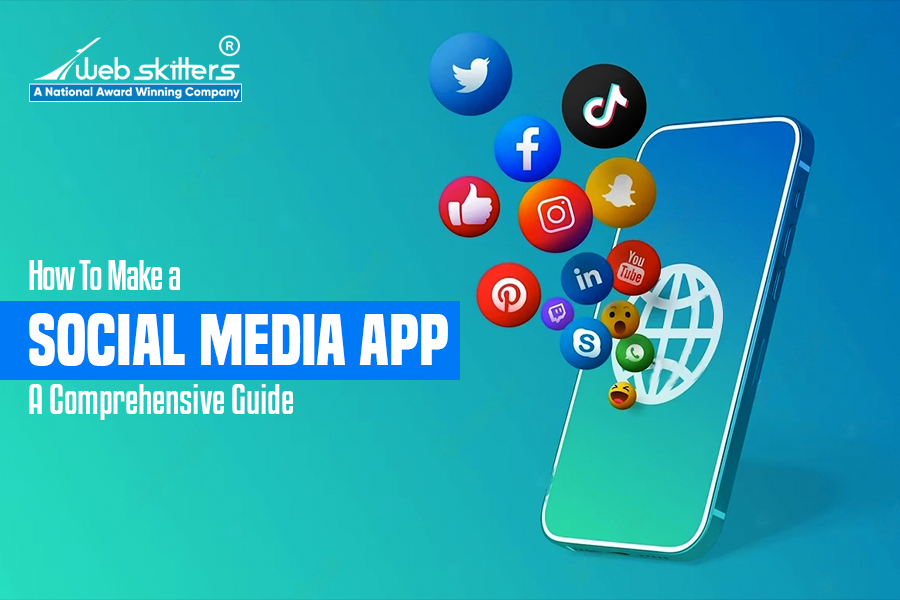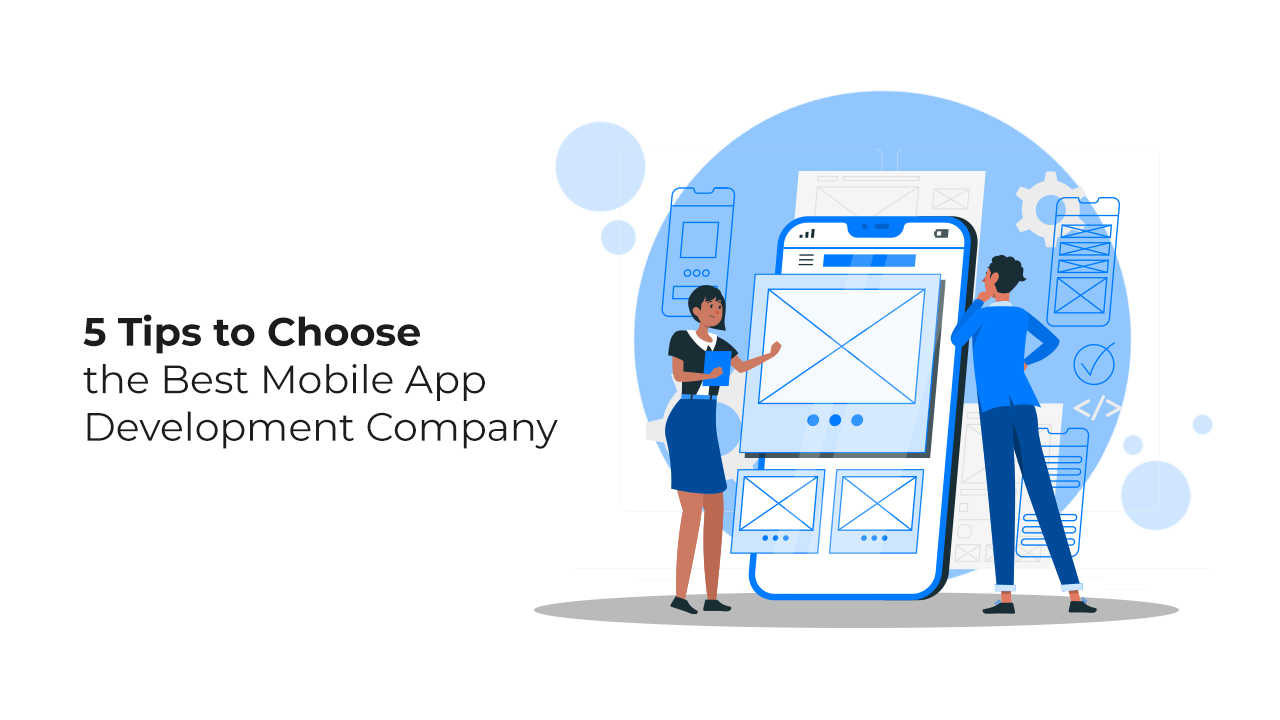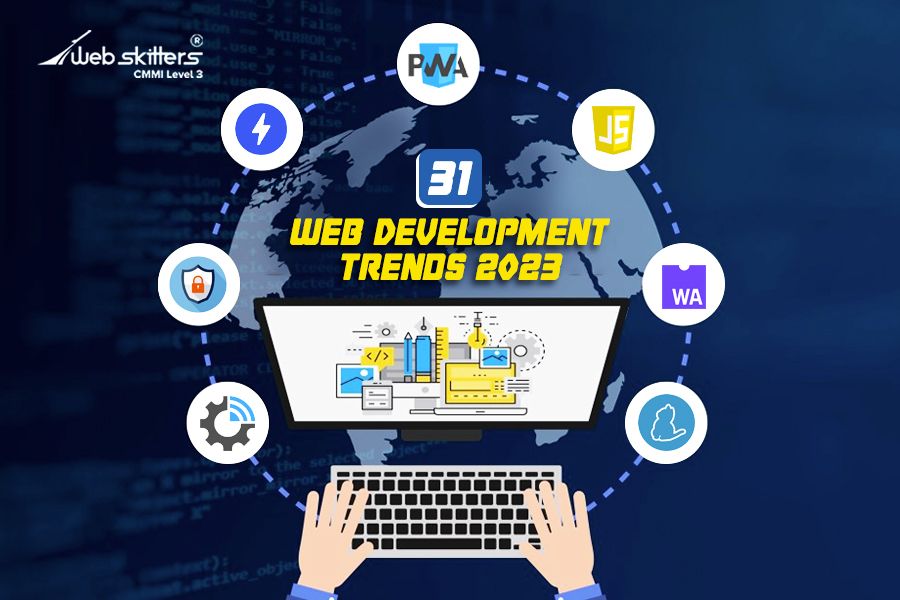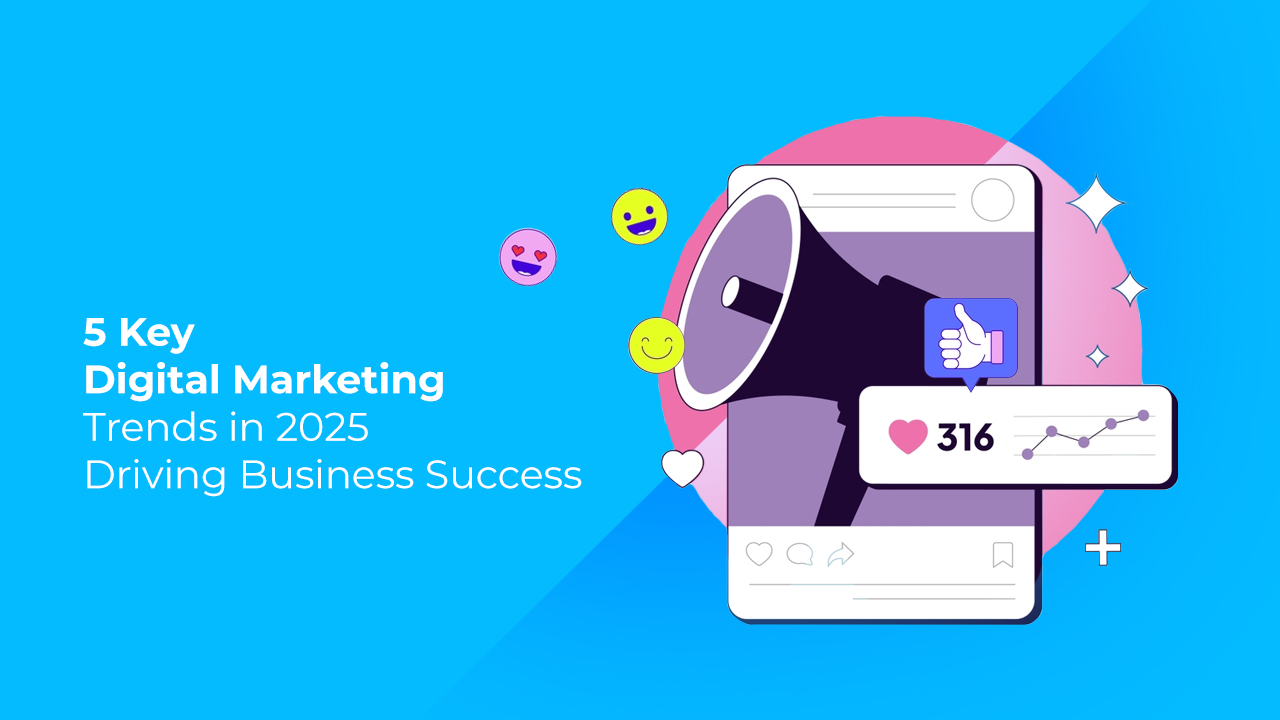
How To Make a Social Media App: A Step By Step Guide
The digital world has become an integral place for every human these days. Today, it connects us globally in a way never imagined before. The growing influence of Facebook, Twitter, Instagram, and TikTok is seemingly apparent and will become even big in the coming years.
Creating a social media app involves blending innovation, strategic planning, and meticulous execution. Do you know how to make a social media app? It requires a deep understanding of user behavior, adaptability to changing trends, and a commitment to delivering an exceptional user experience.
While the process may seem daunting, with the right approach and knowledge, the expert mobile app developers can bring your social media app idea to life and help you make a significant impact in the digital landscape.
You’re in the right place if you visualize a unique social media platform that caters to a specific niche, community, or interest. This comprehensive guide will walk you through the essential steps and considerations involved in making a social media app. This guide will also provide valuable insights and actionable steps to turn ideas into reality.
So let’s dive in and discover the steps, strategies, and best practices to make your app a success!
What Is A Social Media App?
Social media includes a convergence of online platforms and digital applications that center around the realms of community engagement, communication, content dissemination, interactive dialogue, and cooperative endeavors.
These virtual arenas serve as conduits for individuals to maintain connections, actively participate in social circles, and foster harmonious interactions within diverse communities.
People use social media to remain interconnected, forging and nurturing relationships with loved ones, kin, and an array of vibrant collectives. Facebook, Whatsapp, Twitter, Instagram, LinkedIn, and TikTok are just a few famed social media apps that have changed the way we live.
Why Market Aims For Social Media Apps?
Recently, social media has seen a phenomenal shift. From providing communication channels and being a leisure platform to transforming into a business and marketing platform, it has changed its tide significantly. It contributes to crucial political and social discussion and raises awareness astonishingly.
The power of social media has an income generation of billions of dollars. For example, Facebook earned around $118 billion in 2021, and Tiktok generated around 5.1 billion in the same year. No wonder why market aims for social media apps. They want to create a base and climb up the ladder easily, and what’s better than these trendy apps?
Moreover, you have to look at the usage trends in terms of daily time spent per person. On average, in the US, people spend approximately 4 hours on social media. This is the reality, proof that humans have a world of their browsing these apps.
The reality changed even further when the coronavirus came in. People spent most of the day on social media under lockdown. From a commercial perspective, the niche of social media is impressively promising. The rapid development will continue to provide new opportunities for fresh ideas.
Types of Social Media Apps and What People Expect
Isn’t it strange that even after using social media apps for so many years, we don’t know that there are different kinds of the same? Yes, there are essentially 6 kinds of social media apps. Before knowing how to make a social media app, you need to know their types. We list them here-
1. Social Networking
When pondering social network applications, the mind instinctively gravitates toward renowned exemplars such as Facebook and LinkedIn. These apps embody the goal to facilitate human connection and furnish a digital stage to exchange ideas, narratives, and visual depictions.
While Facebook engenders a broad social fabric, LinkedIn is a notable paradigm, cultivating predominantly professional associations. Both, however, have a noted influence on adults in distinct ways.
2. Media Sharing Network
Instagram, YouTube, and Pinterest are the few apps coming under the media sharing category. Sharing mutually interesting videos, photos, and other posts is the norm of this kind. But lately, they have exceeded their original use and turned into constructive marketing instruments for both, big and petite companies.
By attentively harnessing these user-generated insights, enterprises can refine their operations, augment their offerings, and elevate the overall user experience.
3. Discussion and Community Forums
The discussion and community forums include apps like Quora and Reddit. They may have less popularity but have strong relevance in several communities.
While Reddit attempts to connect people based on small topic discussions and talking about experiences, Quora is a space where people can ask any question, and anyone can answer that query. The topic could be of any genre. These platforms are small but have great use rather than finding communities on Facebook with particular interests.
4. Content and Bookmarking Networks
Bookmarking sites serve as valuable tools for users to efficiently organize their online resources and websites by assigning tags and categorizing them accordingly. These platforms also enable users to explore and save captivating content shared by others.
Notably, platforms like Pinterest find utility in marketing endeavors, allowing businesses, blogs, YouTube channels, and various creative works to gain exposure and promote themselves effectively. Twitter would come under a mixed bracket as it is a content and media-sharing app with microblogging features.
5. Consumer Review Network
These remarkable applications serve as invaluable conduits of social proof, furnishing individuals with the means to glean vital insights about products and services and sparing them the laborious task of expending their own time and resources.
By immersing themselves in these virtual realms, users can effortlessly unearth a wealth of information about various companies, unearthing a treasure trove of reviews, testimonials, and firsthand experiences.
Notably, revered platforms such as Yelp and TripAdvisor stand as sterling examples, providing fertile ground for users to peruse and compose reviews encompassing a gamut of establishments.
This stronghold of collective wisdom empowers consumers and presents an untapped reservoir of knowledge for astute business owners who diligently study and embrace the feedback bestowed upon them.
6. Blogging and Publishing Network
Blogging has become very popular today, and having a separate gaming app is on the rise. Distinguishing themselves from content management systems (CMS) such as Wix or WordPress, blogging and self-publishing platforms offer users an avenue to express their thoughts and ideas without needing website creation or hosting fees.
These platforms, exemplified by Medium and Tumblr, grant individuals the freedom to share their perspectives on a grand scale, presenting a lucrative opportunity for businesses to propagate their message and showcase their products to a vast audience.
7. Interest-Based Network
Have a hobby? Interest-based social media apps like GoodReads let users share their opinions on books and recommend some of their own. Apps like Duolingo, or other socially shared common games are increasing rapidly. People can have a great time here. You can even create an app for a specific group of individuals and choose a suitable monetizing and marketing plan.
4 Approaches To Creating A Social Media App
The opportunity to build a platform that fosters community engagement, facilitates communication, and empowers users to share their experiences and passions is undeniably enticing.
In the ever-evolving landscape of digital connectivity, the allure of creating a social media app summons entrepreneurs, developers, and visionaries alike. We have four approaches for you on how to make a social media app, each with its pros and cons. Let’s have a look-
1. SaaS Solution
One potential avenue is to leverage a Software-as-a-Service (SaaS) solution. It entails utilizing an existing platform that offers pre-built social media functionality and infrastructure.
SaaS solutions provide a streamlined approach, as they come with ready-made features, scalability, and technical support. While this option may limit customization, it can significantly reduce development time and costs.
2. Open-source Software
Another path to consider is harnessing the power of open-source software. It entails using publicly available codebases and frameworks that were developed collaboratively by a community of developers.
Open-source solutions offer flexibility, customization opportunities, and the ability to build upon existing functionalities. However, they may require more technical expertise and ongoing maintenance.
3. CMS with a Social Network Extension
Content Management Systems (CMS) equipped with social network extensions present an intriguing hybrid approach. By utilizing a CMS as the foundation and integrating social networking features through extensions or plugins, you can combine the benefits of content creation, management, and community engagement.
This approach balances simplicity and customization, making it suitable for those, who prioritize content-driven interactions.
4. Develop from scratch
Developing a social media app from scratch may be the ideal route for those seeking complete control and flexibility. This approach allows you to shape every aspect of your app, from the user interface to the backend architecture.
However, it requires substantial technical expertise, dedicated resources, and a longer development timeline. So think extensively about this one and then come to a decision.
How To Make A Social Media App?
Creating a social media app is not an easy task. It takes ample research, expertise, and time to draw a rough idea. This comprehensive guide with a detailed checklist will help you to make a worthy social media app-
1. Intention and Target Audience
It is crucial to thoroughly understand the market and competition for a successful launch of a social media app.
Simply having an idea is not enough; you need comprehensive research. It involves identifying user preferences, analyzing existing competition, and determining what features are lacking in the market.
Once a clear understanding of the app’s purpose is established, it is important to brainstorm ideas and consider strategies for user retention, community growth, and engagement. You need to carefully consider the monetization options if generating revenue from the app is a goal.
During this stage, it is essential to study the idea and competitive landscape in detail, analyze requirements, define the target audience, and establish key performance indicators. These steps help identify a unique niche for the mobile social media app’s development.
2. The USP
Making an app is not just about user engagement but how you get to that point. It is essential to have a strong Unique Selling Proposition (USP) that sets it apart from existing platforms to create a successful social media app.
This USP could be a distinctive feature, a specialized target audience, or a unique user experience. The app can attract and retain users by offering something diverse and respectable.
Additionally, thorough market research, understanding user preferences, and analyzing the competition are crucial steps in the app creation process. A social media app has the potential to stand out and succeed in the competitive market by combining a strong USP with a well-designed and user-friendly interface.
3. Development & Design
The development and design phase of creating a social media app involves making important decisions and implementing the outlined features and functionality. One crucial decision is choosing the platform(s) for your app, such as Android, iOS, or both considering their different technological requirements.
If starting from scratch, it’s essential to provide clear outlines and designs to developers to streamline the expensive and time-consuming development process.
Wireframing the app helps visualize its structure and interconnect pages, while prototyping creates a functional model for better comprehension and preparation for the final development stage. These steps are vital in bringing your app to life and ensuring a successful outcome.
4. Design the social network App’s Workflow
A social network app workflow? Yes, you will need it so the work remains organized with minimum confusion during the process. The design has numerous steps-
• Sketching
Whether you do it yourself or done by professionals, have a basic and fast outline of the social media app. Assess the project’s logic, screen number, and interaction among them.
• Wireframing
Creating a wireframe is a crucial step in the design process of a social media app. It allows the development team to visualize the basic structure and layout of the application, providing a structured representation of the user experience.
By creating a wireframe, you can better how the app will look and function, helping them to design a seamless and user-friendly interface for the end user.
• Prototyping
A prototype serves as a functional model of a forthcoming application, offering customers and developers a clearer understanding of the product. It enables easier refinement and modification of ideas before the coding process begins.
By having a prototype, stakeholders can visualize and interact with the app, providing valuable feedback and allowing for necessary changes to be made early on in the development stage. It helps streamline the development process and ensures that the final product meets the desired requirements and user expectations.
• Design App Skins
The design app skins stage involves transforming wireframes into visually appealing app designs. It requires in-depth research, staying updated on the latest trends, and meticulous attention to detail to create a user interface (UI) and user experience (UX) that offers the best possible solutions.
By carefully studying various design options and incorporating current trends, the goal is to craft visually appealing and intuitive app designs at this stage. This stage plays a crucial role in shaping the overall look and feel of the app.
5. Select a Revenue Models
We all want something good out of making a social media networking app. Ultimately it’s all about getting received well by users and gaining profits. Selecting a revenue model is critical to developing a social media app.
One popular option is the freemium model, which offers free and premium features or content, often supported by advertising. This approach allows for monetization while maintaining user engagement. A social media app can achieve sustained growth and financial success by carefully considering and implementing the right revenue model.
6. Features and Functions
The features and functions have a great role to play in any app, not just social media. At the initial stage, it is quite easy to get lost in the features and functions implemented. Be sure to know your budget, restrictions, and development skills.
Decide what kind of activities would your users want to do on the app. Some questions to ponder (out of the many)-
- Can users update posts? If yes, then how will they post, who posts, its visibility, and other features in it?
- Think of the kind of user engagement, comment, like, and reaction features.
- Do you want to use push notifications for higher engagement?
- Is the app for a private community or free for everyone to install and interact with?
- What kind of security measures you’ll put in for data privacy?
- Other social media app linking for increased reach?
- Will there be geolocation in the app?
It allows the app to know where your users are. This could be used for user-generated content and let people get tagged.
7. Develop an MVP For Test Ideas
MVP, or minimum viable product is like a bare skeleton of an app. It comprises just the basic features required to function. Many startups use this to test the market where the environment is less complicated.
They don’t want to risk running numerous technical issues coming up with all the features included. Moreover, users get a chance to use the less cluttered app.
8. Quality Assurance for iOS and Android
Quality assurance is an essential step in the development of a social media app, regardless of whether it is being created for iOS or Android. This process ensures that the app meets the highest standards of performance, functionality, and user experience.
Through rigorous testing and evaluation, you can identify potential issues, bugs, and inconsistencies to address them, ensuring a smooth and reliable app for users on both platforms.
Quality assurance before launching, plays a vital role when developing such apps. It enhances user satisfaction, minimizes errors, and maintains the overall integrity and reputation of the app.
9. Feedback
Collecting feedback is crucial after developing a minimum viable product (MVP) for a social media app. User feedback provides valuable insights into areas of improvement and identifies any shortcomings or strengths. By continuously incorporating user feedback, you can align the subsequent releases with the evolving needs and behaviors of the users.
Analytics play a vital role in predicting trends and user behaviors more accurately, aiding the app refinement process. It’s important to note that the improvisation process is ongoing, as the app needs to adapt to the dynamic factors that influence user behaviors.
This iterative approach ensures that the app remains relevant and user-centric.
10. Analysis Of The Feedback
Analyzing user feedback is a crucial step in creating a social media app. Once the app’s minimum viable product (MVP) is released and users start providing feedback, it is important to carefully analyze feedback to gain insights into their experiences, preferences, and suggestions.
By analyzing the feedback, developers can identify areas where improvements are needed, address any issues or concerns raised by users, and identify features or functionalities that are well-received to enhance further.
This analysis helps in shaping the future iterations and updates of the app, ensuring that it aligns more closely with user expectations and needs.
11. Further Maintenance, Improvements & Support
After launching a social media app, the journey doesn’t end. Ongoing maintenance, improvements, and support are vital to its success.
Regular maintenance involves monitoring the app’s performance, identifying and fixing any bugs, or issues that may arise, and ensuring compatibility with new operating systems or devices. It ensures a smooth and uninterrupted user experience.
Continuous improvement is necessary to stay competitive and meet user expectations. Providing reliable and timely support to users is crucial for customer satisfaction.
Setting up channels for users to reach out for assistance, addressing their concerns promptly, and providing regular updates and bug fixes demonstrate a commitment to user satisfaction and loyalty.
12. Community Growth
Building a thriving community is crucial for the success of a social media app. Make your community easily accessible within the app’s interface and provide clear links to external websites or social media pages to achieve this.
Focus on creating an intuitive and user-friendly interface to encourage users to engage and participate actively. Promote the app through various channels, including social networks, to reach a wider audience.
Ensure your content is engaging, relevant, and resonates with users to maintain their interest. You can foster growth and create a vibrant user base by actively promoting and nurturing your social media app’s community.
13. Publishing & Marketing the App
Publishing your social media app involves creating promotional materials like screens, video guides, and compelling app descriptions. These materials help your app stand out on platforms like the Apple Store and Google Play Market.
Additionally, marketing is an important aspect to consider from the beginning. Development costs are just one part of the project’s expenses.
It’s crucial to factor in basic marketing needs and costs. You have the freedom to choose the marketing approach that suits your app, but it’s vital not to overlook it and only start thinking about it after your app is already in the app store. Furthermore, tracking the metrics for your app is essential for success in the competitive social media market.
Must Have Features To Create Social Media App
Though the exact features depend on the kind of app one desires, there are some basic functions you need to know when you learn how to make a successful social media app. For starters, have a clear development plan for the main features. We’ll let you know some of the features that you should include-
1. Profile
Introduce a user-friendly social media app that offers seamless signup and login experiences. Users can effortlessly create accounts and log in using their phone number, email, or popular social media profiles like Facebook.
The app should prioritize simplicity and efficiency, allowing users to effortlessly create personalized profiles with essential details such as their name, location, photo, and a brief description.
With a focus on providing a smooth onboarding process, apps ensure the signup and profile creation become pleasant and intuitive first interactions for users.
2. Posts
Social media app empowers users to publish and share their thoughts, news, and information seamlessly. Whether they want to share updates with their friends or engage in discussions with the wider community, the app should provide a platform for users to express themselves and spark meaningful conversations.
With the option to create and publish posts, users can easily share their perspectives, share interesting news articles, and contribute to various topics of interest. Such a feature fosters a vibrant and engaging environment where users can connect, exchange ideas, and build connections with like-minded individuals.
3. Notifications
Getting notifications is crucial to having a great app. A way for people to be notified of updates or things they’ve been ‘tagged in’, for example, Push Notifications where people get updates on their mobile phones without having to log in to the app.
Push notifications are a great way to keep users engaged with your social media network or mobile app. Users can know about new content, updates, or special offers.
However, don’t forget that it’s important not to overdo it – too many notifications will quickly become annoying and cause users to disable them. Find a balance that works for your app and stick to it.
4. A Search Bar
The search bar is vital in any social media app. As an app maker, you have to understand that the audience is constantly searching for something or the other. By providing a search bar, you aim to streamline the process of finding specific groups, topics, or individuals of interest.
Users can simply enter relevant keywords or names, enabling them to quickly discover and connect with the content and communities that align with their interests.
The search bar enhances the overall user experience by enabling efficient exploration and seamless access to the desired content within the social media app.
5. Friend Options
Since the apps are “social” media apps, it is a given that there needs to be an option to make new friends. The connection found through social media will justify its namesake function.
So keep options to send friend requests or to follow each other.
It will help people stay updated and make temporary or life-long connections. Users should be able to see what’s in the other’s feed and get notifications according to their settings. Therefore, every social media app maker must include this feature when making social media apps for iOS or Android systems.
6. News Feed
What is a social media app when there is no room for the news feed feature? It is a bland and unworthy app. The social media app should offer a carefully crafted and user-friendly news feed, serving as a central hub where one can stay updated on the activities and lives of their friends, followed individuals, and groups.
This vital feature ensures timely and relevant content delivery, fostering an engaging user experience.
Prioritize customization, allowing users to personalize their news feed according to their preferences, ensuring they receive the content that resonates with them. With a well-designed and user-friendly news feed, let the app aim to provide an immersive and tailored social media experience.
7. Chat/Messaging
We know many of you have made new friends via social media. As we have already established, social media platforms are all about finding new connections and staying in touch, which heavily requires private messaging options.
You should know that Facebook has created a separate direct messaging app for it, however, most social media apps have in-built options to chat.
So how do begin social media networking that helps users make and nurture their relationships? You make a platform offering encrypted and secure messaging options. It ensures no access to private conversations.
8. File uploads
Most social media app users tend to share different kinds of files. It is fun to connect with people in different ways. Therefore, file uploads are an essential feature in social media apps that allow users to share their media content, such as photos and videos, with others.
With a user-friendly interface, diverse file format support, file size limitations, and other aspects of putting the file upload feature, social media apps will become more in use.
Overall, file uploads in social media apps enable users to share their visual content with others, fostering engagement, self-expression, and communication within the app platform’s community.
9. Resource Library
The Resource Library is a powerful feature in an app that serves as a central repository for storing and organizing various content assets, such as videos, PDFs, documents, and more.
Centralized content storage, categorization, organization, easy sharing, filtering capabilities, updates, and format support are required to make a resource library feature. A person or team who are expert mobile app developers could do this work flawlessly for you.
10. Groups and subgroups
One essential and powerful feature of a social media app is the ability to create groups and subgroups. This feature allows users to establish the main community or network and divide it into specialized subgroups based on specific interests, topics, or niches.
Having a main group is suitable for broad themes, and interests, and the subgroups would be great for specific interests and subtopics.
The creation of subgroups facilitates focused discussions and content sharing within a particular niche. Users can participate in conversations, share relevant tips, techniques, or resources, and showcase their work specifically related to the subgroup’s theme. With this, notification updates will also be necessary.
11. Live Streaming
Live streaming has become crucial in social media apps, allowing users to instantly connect with their audience and engage in activities like product demos and fitness sessions. It enables real-time audience interaction, instant feedback, and versatile content creation.
The feature ensures the discoverability of live streams, offers archiving options for future viewing, and opens monetization opportunities. Moderation tools are implemented to maintain a safe environment.
Know that live streaming revolutionizes how users connect, fostering authenticity and connection within the app’s community.
12. Customization
In a social media app, users can personalize and customize the visual identity of their social network to align with their brand. This feature allows users to customize the colors, fonts, and logo, enabling them to create a unique and branded look for their network.
Additionally, users can customize their domain name within the app, further enhancing their brand’s presence and ensuring a cohesive and consistent user experience.
13. Security
In response to concerns surrounding security and privacy settings in social media apps, you must include a robust security feature. This feature addresses instances where data has been compromised or leaked to unauthorized parties, providing users with peace of mind regarding protecting their information.
By implementing advanced security measures, such as encryption protocols, secure data storage, and stringent access controls, the app ensures the safeguarding of user data, promoting a secure environment for users to engage and share within the social media platform.
If this feels complicated, you can hire experts for a swift and creative social media solution.
14. Analytics
When developing social media app, incorporating data and analytics capabilities is essential. This feature enables access to valuable insights regarding user behavior, preferences, and interactions.
By tracking factors such as user location, content engagement, and device type, the app can better understand its users and tailor the experience to meet particular needs.
This data-driven approach ensures users receive an optimized and personalized user experience, enhancing their satisfaction and engagement within the social media platform.
15. Admin Access
The admin access feature in a social media app provides you, as the administrator, and those assigned with specific roles, the necessary tools to effectively manage the platform.
With admin access, you can handle various administrative functions, such as blocking unreliable users, moderating content, and overseeing the overall site operations. This feature empowers you to maintain a safe and well-moderated environment, ensuring a positive user experience for all within the social media app.
16. Moderation tools
Owning your social network brings the advantage of mitigating concerns about unwanted trolling or attempts to defame your business. You effectively address and eliminate harmful activities by incorporating moderation tools within your social network, such as shadow banning and comment editing.
These tools provide the means to maintain a positive and safe environment within your social network, ensuring that interactions and discussions align with the desired atmosphere and protect your reputation.
17. Monetization
If you intend to monetize your social network or community, it is crucial to have robust options in place when building your social network. Monetization emerges as one of the most valuable features for business owners, providing avenues to generate revenue from your platform.
By incorporating diverse monetization options, you can effectively capitalize on your social network, creating opportunities for businesses to thrive and ensuring the sustainability of your community.
Including Advanced Features For Social Media Apps
Want to know how to develop a social media app for iOS or Android? While the above are some of the basic features every social media app should have, some other superior ones should be a part of them. some advanced features that should be there are-
1. Augmented reality, VR, and Face Filters
Augmented reality (AR), virtual reality (VR), and face filters have become prominent features in social media apps. Apps like Snapchat have successfully utilized AR technology, allowing users to create videos enhanced with face filters and augmented reality effects, which can be shared with their audience.
Similarly, companies like Meta (formerly known as Facebook) are actively integrating VR technology into their products.
For instance, they have introduced the app “Spaces”, which enables people to interact with each other using VR headsets, immersing themselves in virtual environments. These advancements in AR, VR, and face filters offer users captivating and interactive experiences within social media platforms.
2. Social Commerce
One may wonder, what would entail social commerce? Integrating social commerce enables users to discover, browse, and purchase products directly within the app.
This feature allows businesses and influencers to showcase their offerings, facilitate seamless transactions, and leverage user-generated content for social selling, creating a seamless shopping experience. Overall, this feature will help the general public to explore more of the social media world.
3. Artificial Intelligence Chatbots
Ai technology is taking over the world rapidly. With thousands of AI functions, the world is becoming a fascinating place. Implementing AI chatbots enables automated and intelligent conversations with users.
These chatbots can provide instant customer support, answer frequently asked questions, offer personalized recommendations, and engage in interactive conversations, enhancing user satisfaction and reducing response times.
4. Ephemeral Content
Ephemeral content offers more than just typical features by introducing a unique element of “disappearing” content. This feature allows users to share time-sensitive posts that encourage authentic and spontaneous sharing.
By creating a sense of urgency, ephemeral content boosts engagement levels and prompts users to view and interact with the posts before they vanish.
5. Gamification
Games serve as an effective method to attract users to your app and generate interest. They help reduce the typically high costs associated with acquiring users and enhance user retention. Gamification is particularly advantageous when targeting younger demographics, as it can be a compelling strategy to attract new users.
Even if your app isn’t primarily focused on gaming, such as business apps like LinkedIn, incorporating gamification elements can be beneficial. For instance, implementing a scoring system that incentivizes users to complete their profiles can effectively engage users.
Social Media App Design: The Best Practices
If you know how to make a social media app from scratch, you know how important is it to ensure that it is intuitive and easy to understand. It should be engaging to the audience that you intend to you.
We give you some of the best practices to remember when making a cool social media app-
- A clean and simple design that individuals are familiar with is advisable to make a good start.
- The design should remain consistent across all the platforms, be it web or mobile apps prevent any kind of confusion for users.
- Having a round profile picture is the latest trend so that people remember the face. It makes sit simpler to find and remember them from their list.
- Create an option to let people share information and add substance to the personality f their profile.
- Customize colors to the respective brand guidelines to have a seamless user experience.
- Let people have an easy way to search for users and have a relatable group or content.
By adhering to these best practices, you can enhance the overall appeal and usability of your social media app.
Social Network App Development- Choosing The Ideal Option
When developing a social network app, you have several options to consider. Hiring professionals is a wise option as they know the market and technicalities and have an objective view while making an app. Let’s explore each option in more detail-
1. Freelance Social Media App Developers
We know many of you may be wary of hiring freelancers. But hiring freelance developers can be a viable choice if you have a limited budget or a smaller-scale project. They offer flexibility, as you can hire them for specific tasks or the entire app development process.
However, it’s important to thoroughly assess their skills, experience, and portfolio to ensure they have the expertise required for social media app development.
Communication and project management may require more effort, as freelancers often work remotely. Analyze all aspects of a freelancer and your budget.
2. The App Builders
Hiring an app builder is a popular option for those without coding experience or limited technical knowledge. They provide a simplified, drag-and-drop interface to create basic social network apps without writing code.
This approach is generally more affordable and faster than other options. However, app builders may have limitations in terms of customization and scalability. Complex or unique features might be challenging to implement using app builders, and your app may lack the same level of polish and functionality as those developed by professionals.
3. Social Media App Development Company
Engaging a social media app development company can be the most comprehensive and reliable option. Professional development companies have teams with specialized skills and experience in building robust and scalable social network apps.
They know about mobile app development frameworks, the importance of social media for brand value, and key mobile app features that every startup needs.
They offer end-to-end services, including conceptualization, design, development, testing, and ongoing support. Collaborating with a reputable company ensures high-quality results, timely delivery, and access to a wide range of expertise. However, this option may involve a higher budget compared to freelancers or app builders.
What Does it Cost To Make a Social Media App?
The cost of making a social media app can vary significantly depending on various factors, including the complexity of the app, the features and functionalities involved, the platform(s) it will be developed for (iOS, Android, web), the development approach chosen, and the location and rates of the development team.
Let’s discuss them in detail-
1. Development Team
The cost of hiring developers, designers, and other professionals involved in app development can vary based on their skill level and location. Rates may differ significantly between regions or countries.
2. Features and Functionalities
The complexity and number of features in your social media app will impact the development cost. Basic features such as user registration, profiles, news feeds, messaging, and image/video sharing are common, but more advanced features like AI-powered recommendations or live streaming will require additional development time and resources, leading to higher costs.
3. Design and User Experience
The app’s user interface (UI) and user experience (UX) design play a crucial role in its success. The cost may increase if you require custom design work, animations, or a highly polished user interface. So have clarity in such situations.
4. Backend Infrastructure
Developing a scalable and secure backend infrastructure for a social media app, including servers, databases, and APIs, adds to the development cost. So when making an app, the complexity and scalability requirements of your app will impact this aspect.
5. Testing and Quality Assurance
Rigorous testing and quality assurance processes are essential to ensure a smooth and bug-free user experience. This includes manual and automated testing, which can contribute to the overall cost. This step has to be perfect because you don’t want to shoo away your audience due to glitches or slow download time.
In the US, it may take between $90,000 to $150,000 to develop a social media platform, but the cost would be quite low if you create one from companies in Europe or India.
However, we suggest consulting with professional app development companies or freelancers, as they know how difficult it is to make a social media app. You can provide them with your specific requirements and request cost estimates based on your project scope.
They can provide a more accurate assessment based on your unique needs and preferences.
Social Media Apps- Quantitative Metrics And Key Efficiency Indicators
Since we have already discussed how to build a social media platform, it’s time to know about the primary efficiency indicators. For detailed tracking, you have to capture the most recent KPIs, monitor change, set realistic goals for some time, and do comparative analysis.
Quantitative metrics for social media applications can provide insights into the performance and engagement of these platforms. Here is a small outline of the key efficiency indicators-
1. User Acquisition and Activation
The metric to understand the efficiency indicators is through user acquisition. Key metrics in this category include the cost per installation, which measures the expenses associated with acquiring users through ads. Another relevant metric is the customer acquisition cost, which encompasses the total cost of marketing activities aimed at attracting users.
Through user activation, you could know the number of active users still there compared to installations. The activation process involves entering a code from SMS or getting a link via email.
2. User Base Metrics
The MAU or Monthly Active Users is a crucial quantitative metric determining the number of unique users, who engage with the app within a given month. It reflects the app’s popularity and overall reach, indicating its ability to attract and retain a significant user base.
The more monthly users, the better your app performance. Other forms to measure are-
- Total Users: The overall number of registered users on the platform.
- Daily Active Users (DAU): The number of unique users who engage with the platform daily.
- User Growth Rate: The percentage increase in the number of users over a specific period.
3. User Retention
Retaining your users is very important when making a website or an app. User retention is a measure of how well an app retains its users over a specific period. It helps assess the app’s ability to keep users engaged and satisfied, indicating the effectiveness of its features, content, and overall user experience.
High user retention rates signify strong app loyalty and long-term user engagement. Use this measure to know the efficiency of your app.
4. User Engagement
Engaging users is a tough task if you don’t have the right kind of app for the audience. User engagement measures the depth of users’ interaction with the app and its features.
It goes beyond mere involvement and focuses on the quality and depth of user interactions. High user engagement indicates that users find value in the app and regularly spend meaningful time using it. You can assess the quantitative metrics and efficiency of the app through the following-
- Likes: The number of times users “like”, or “thumbs up” a post or content.
- Comments: The number of user-generated comments on posts or content.
- Shares/Retweets: The number of times users share or retweet posts or content.
- Click-Through Rate (CTR): The percentage of users who click on a link or call to action within the platform.
- Cost-per-Click- The average cost per click on an ad. (platforms with advertising features)
- Return-on-Ad-Spent– The revenue generated per unit of ad spend. (platforms with advertising features)
- Impressions and Clicks- The number of times ads get displayed and are clicked.
- Time Spent: The average amount of time users spend on the platform per session or day.
5. Traction
Traction represents the growth and momentum of an app. It assesses the rate at which the app is gaining new users, generating buzz, and expanding its user base.
Traction can be measured through metrics, like app downloads, sign-ups, and user activity growth rates. Positive traction suggests that the app is gaining visibility and attracting a growing number of users-
- Conversions: The number of desired actions taken by users, such as signing up, making a purchase, or downloading an app.
- Conversion Rate: The percentage of users who complete a desired action out of the total number of users who interacted with the platform.
- Cost per Conversion: The average cost incurred to acquire a conversion or desired action.
6. Content Metrics
Content on social media matters a lot these days. The type of content that is in demand can be known through quantitative content metrics. It can be video content, blogs, podcasts, and more.
There are a few ways to understand it. Some of them are-
- Posts: The number of posts or content shared on the platform.
- The reach: The total number of unique users who see a specific post or content.
- Impressions: The total number of times a specific post or content is viewed.
- Virality: The measure of how quickly and extensively a post or content spreads across the platform.
Monitoring and analyzing these efficiency indicators helps app developers and marketers evaluate the performance of social media apps.
By understanding these quantitative metrics and making informed decisions based on the insights they provide, app creators can enhance user experiences, optimize engagement, and drive sustainable growth. The specific metrics used can vary depending on the goals, objectives, and features of the platform being analyzed.
How To Acquire Users For Social Media Apps?
Learning how to create social networking app from scratch is just one step to starting your dreams. One has to market and promote it well to gain traction from users. Here are a few ways to acquire users-
1. Optimizing app store
The technique to do this is the same as optimizing a blog. The copywriting method to put keywords to the text to make your social media app more reachable is the key.
It should include a description, name, reviews and ratings, and more. It will help determine what keywords people use to discover an app. List your app in the correct category and refresh the description with novel keywords and fresh features. You can also upload videos on the app store and keep checking the key metrics.
2. Review requests
Encouraging users to rate an app is crucial as they are more inclined to share negative feedback when something goes wrong, even if they enjoy the product. Two effective approaches can be employed to remind users to rate the app. Firstly, a pop-up window can gently prompt users to take a moment and provide a review.
Alternatively, embedding the rating request within the app screen offers a more seamless and organic experience, often yielding better outcomes. A recommended strategy involves triggering the rating request after users achieve significant milestones, such as sharing media content, making new connections, or completing a purchase.
3. Paid ad usage
How does one make the social media app more appealing to the audience? You need to focus on targeted paid ads. It is extremely useful to gain traffic. Consider this one for an affiliate partnership, Facebook ads, promoted tweets, and cross-promotion network, to reach maximum users.
4. Influencer marketing
There are so many influencers nowadays that you can ask them to do the work for you. ensure that the influencer is suitable for your brand and the audience type. But you should also make space for creative freedom to make the gig eye-catchy. Leverage the services of the best influencers to increase the campaign ROI and choose the right platform.
5. Organic user acquirement
Leverage various media channels such as blog posts, videos, white papers, and ebooks that delve into relevant topics to foster organic user acquisition and steadily boost traffic for your social media app.
Creating a separate blog website may not be necessary if you wish to allocate resources judiciously. Instead, harness the power of established platforms like media effectively disseminate information about your captivating product. This approach enables you to tap into existing networks and expand awareness organically.
Advantages Of Creating A Social Network App
By now, you know how to make a social networking app, but did you know how advantageous it is in reality? We’ll give you some of the top-most benefits that guarantee that social media app-making is worthy enough. The social media platform can capture various kinds of attention among people.
Let’s start with the advantages-
1. Connectivity and Engagement
A social network app provides a platform for users to connect and engage with friends, family, and like-minded individuals. It enables users to build and preserve relationships, share content, and join in discussions, fostering a sense of community. There is direct interaction that becomes crucial for the app makers to build trust and create changes if needed.
2. Targeted Niche
By creating a social network app focused on a specific niche or interest, you can cater to the needs and preferences of a particular audience. It allows for a more targeted and personalized user experience, enhancing user satisfaction and engagement.
Therefore, when making an app, know that you will get lots of data regarding your audience that you can use for your benefit.
3. Brand Building and Promotion
We have seen many app makers not using the social media app to its full benefit. A social network app provides an opportunity for businesses and brands to build their online presence, engage with their target audience, and promote their products or services.
It offers a direct channel for communication, customer feedback, and brand advocacy.
4. A Safe Space For Creativity
A social network app provides users with a dedicated platform to express their creativity. It allows individuals to share their thoughts, ideas, artwork, music, videos, and other forms of content with a like-minded community.
The app can become a safe space where users feel comfortable showcasing their talents, receiving feedback, and connecting with others, who share similar interests by fostering a supportive and inclusive environment.
This sense of creative freedom can be empowering and inspiring for users, encouraging them to actively engage and contribute to the app’s content ecosystem.
5. Easy Money-making
Social network apps present various monetization opportunities, making them appealing to entrepreneurs and app developers. Some of the common revenue streams associated with social network apps include advertising, sponsored content, in-app purchases, premium subscriptions, and partnerships with brands or influencers.
By offering targeted advertising or allowing brands to reach their specific user base, app owners can generate substantial revenue. Additionally, in-app purchases or premium subscription options for enhanced features or exclusive content can create a steady income stream.
The potential for easy money-making makes social network app development an attractive business venture.
The Best Social Media Apps in 2023- A Few Examples
Making social media apps is hard work and if you want to know how to make social media web app, learn from other existing ones. The best ones can teach you a lot. Here we will mention the 5 amazing social media apps that have taken over the world.
1. Facebook
Facebook is currently the largest and most widely used social media platform in 2023, boasting a user base of 3.5 billion worldwide. People aged 25 to 35, primarily located in the United States use it the most.
The app offers a range of features, including a friends list, news feed, messenger, likes and reactions, groups, marketplace, and comments, including business-oriented features for promotional purposes.
Its primary revenue generation model revolves around selling advertising spaces on the platform. Technically, Facebook utilizes a vast tech stack encompassing JavaScript, HTML, CSS, C++, JSON, AJAX, LAMP, and Xamarin. forms, MariaDB, MySQL, Swift, Java C#, Apache Hadoop, and React JS.
2. Youtube
Our introduction to YouTube goes way back to 2005. YouTube is a prominent media-sharing platform renowned for its vast user base, currently reaching 467 million individuals. The platform primarily attracts males aged 25 to 34, establishing a strong demographic presence.
Notable features offered by YouTube include seamless browsing capabilities, the ability to subscribe to channels, a personalized home screen with tailored video suggestions, access to trending content, interactive comments, and the option to express appreciation through likes.
The primary revenue generation strategy of YouTube revolves around selling advertising spaces integrated within videos and displayed on various pages. Furthermore, YouTube offers a premium subscription service called YouTube Premium, providing an ad-free viewing experience for users.
In terms of technology, YouTube leverages a sophisticated tech stack comprising MariaDB, C, JavaScript, C++, Java, Python, BigTable, Go, Vitess, and MySQL.
3. Instagram
Instagram, the renowned photo-sharing app, has established its position as one of the most popular platforms, boasting a staggering user base exceeding 2 billion individuals. Its predominant audience comprises both males and females aged between 18 to 34 years old.
Instagram offers a wide range of features, allowing users to effortlessly upload and share photos, engage through comments and likes, stream live videos, utilize shoppable tags, leverage hashtags for discoverability, and share stories.
The primary monetization strategy employed by Instagram revolves around advertisements strategically placed within the platform. Technically, Instagram relies on a diverse tech stack, incorporating Python, JavaScript, Java, React, Redis, PostgreSQL, Objective-C, Cassandra, Django, and GraphQL.
4. TikTok
TikTok is the most famous and fastest-growing social media app with 1.2 billion users. Nearly half of its users fall within the 18 to 24-year-old age bracket.
TikTok offers a diverse array of features, enabling users to upload and edit videos, share media content, engage through comments and likes, leverage hashtags for discoverability, participate in duets, react to videos, and stream live content.
The primary monetization strategy employed by TikTok involves in-app purchases, where users can acquire in-app currency to support and donate to their favorite creators. Additionally, advertising serves as the platform’s second-largest revenue stream.
From a technical perspective, TikTok utilizes a range of technologies, including Kotlin, Swift, MongoDB, MySQL, Node.js, and Cassandra.
5. Twitter
Twitter, the widely utilized microblogging app, has amassed a substantial user base of 320 million individuals. Its primary target demographic revolves around people aged 25 to 34 years old.
Twitter offers a plethora of features, empowering users to create tweets, engage through shares, comments, and likes, conduct polls, exchange direct messages, utilize account tagging, and participate in threaded conversations.
The monetization strategy employed by Twitter predominantly revolves around advertisements strategically placed within the platform. Technically, Twitter relies on a robust tech stack, incorporating Ruby on Rails (RoR), React, Scala, Node.js, Java, GraphQL, and Redis to ensure efficient operations.
Get Social Media Ready!
With the rising demand for social media apps, you will need to build an astounding one that has an out-of-the-box concept. It takes a lot of brainstorming to make one, so having a professional would be a wise idea. With a group of experts, it will be easier to juggle the whole process, and that’s why having the right team of app developers is crucial.
All you need is a company with a perfect connection. Hire the top 1% expert having a great understanding, and fits your expectation and budget. It’s never too late to start something new!
Frequently Asked Questions On Making Social Media Apps
1. How can I make money with social media apps?
Making money via social media apps has become quite easy nowadays. There are several ways to do so. Some examples are integrated advertisement, in-app purchases, sponsored content, data monetization, partnerships, and collaboration.
The strategies you use to monetize the app also influences your earning. It’s better to take expert advice before launching the app.
2. What are the most popular social media apps in the world?
Currently, some of the famous social media apps in the world are Whatsapp, LinkedIn, Telegram, Facebook, Instagram, TikTok, Reddit, YouTube, Twitter, and Pinterest. Many more apps are quite hyped and will continue to grow apart from the above-mentioned names.
3. How long does it take to make a social media app?
The time it takes to develop a social media app can vary based on various factors, including the app’s complexity, the desired features and functionalities, the size and expertise of the development team, and the development approach used. Generally, building a social media app from scratch can take several months to a year or more.
However, it’s important to note that the development process can be iterative, with the initial release being a minimum viable product (MVP) and subsequent updates and improvements being rolled out over time.
The timeline can be influenced by the availability of resources, collaboration among team members, and unexpected challenges that may arise during development.
4. Are social media apps hard to make?
Developing social media apps may take time due to their complex nature and the need for robust features, scalability, and seamless user experience. They require expertise in multiple technologies.
Additionally, ensuring data security, handling high volumes of user-generated content, and addressing performance issues add to the complexity.

 Ecommerce Development
Ecommerce Development 













